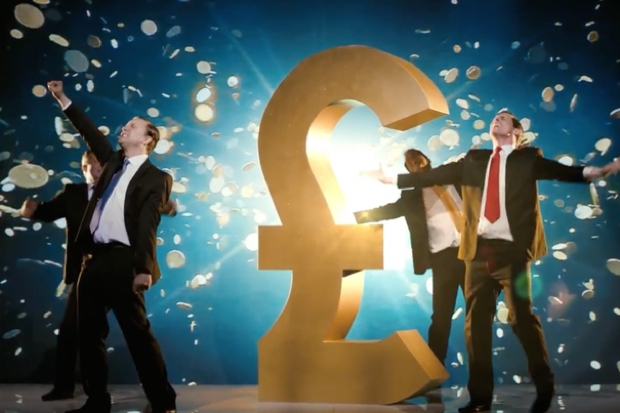Last week, the Greens released ‘Change the Tune’, a party political broadcast on YouTube. It features actors playing Cameron, Clegg, Miliband and Farage all singing in harmony. All four men are indistinguishable from one another. Ukip and the Lib Dems are the same, went the message. Only the Greens are different.
Met with wild adulation from Green supporters and bewildered scepticism from more-or-less everyone else, the video has been the most high profile video of the campaign so far. Buckle up – it’s time for viral politics.
YouTube and other platforms hosting political videos side-by-side with popular culture will play a significant role in this election. This is not particularly controversial. Political videos are an electoral craft as old as the television. But the fact that they can now be produced at little cost and shared at zero cost (and without the neutrality laws that govern political broadcasts on the telly) mean their importance grows with every click.
MP’s are starting to stake out their digital territory. Where once a phone number and a fortnightly surgery was enough, MPs are now everywhere: websites, email addresses, Twitter accounts, Facebook pages. Simon Hughes – Lib Dem Minister for Justice – even has a Snapchat account. With a large volume of digital content being pumped out by politicians and their parties, it is any wonder this election is being described as the most ‘digital’ to date.
Digital politics is a curious phenomenon. For some, it dumbs it down: 140 characters can’t be enough for the serious discussion befitting government. For others, it is seen as a tool for democracy, putting our representatives a few clicks away. They seem less fusty, less out-of-touch, showing a human side the Party isn’t always a good vehicle for.
It isn’t just Facebook and Twitter, mind. One of the trends we’ve spotted is that digitally-engaged politicians are active across more than one platform. Increasing numbers of MPs are taking to Twitter to share videos: 242 (46%) at the last count, sharing over a thousand videos.
The MPs sharing videos on Twitter are very closely correlated to those most active on Twitter. The top five include George Galloway, Julian Huppert, Tom Watson and Karl Turner – all among the top ten most active MPs on Twitter. Galloway is top of both, of course. These politicians are increasingly thought of as part of a new breed of digitally savvy politician: by communicating with their followers directly they boost feelings of representation. It also adds a human touch, something frequently lost in the cacophony of political broadcasts, and one of the most desirable traits demanded by voters. There is only one female MP in the top twenty, though what to make of that I don’t know.
Second, these MPs are clearly trying to show there is more to them than Select Committee hearings. Watson, Wishart and Turner all share music videos – from Beyoncé to The Jam – mixed in with their more political content. Labour favour the Foo Fighters, the Cure and a bit of Presley. George Galloway likes to share videos of himself. Tory MPs are less willing to divulge their tastes in music, opting instead for Monty Python and Peter Cook sketches, as well as trailers for the latest season of House of Cards. It may not surprise you to learn that this content tends to have a broader appeal than some of the more political content. A video entitled ‘Daniel Kawczynski – Dairy Industry question’ only has eighty views.
Third, parties too are rallying around the ability of platforms like YouTube to hit a large audience very quickly. It was no coincidence that hundreds of Labour supporters armed with pre-prepared images and messages hit Twitter during the Leaders Debates: they were lying in wait, the material carefully organised, ready for a digital ambush while the UK was second-screening, phone in one hand, remote in the other. Labour are much better at this than the Tories. Of the top ten videos shared by MPs, only one is from a Tory. Labour’s ‘What’s the Choice in This Election?’, starring Martin Freeman, was shared by 27 Labour MPs, albeit that ended when charges of tax avoidance began to fly around.
But it was the Green Party’s staggering ‘Change the Tune’ that did what it almost certainly was designed to do: for all its cringe-worthy content, it is the highest profile political video of the campaign so far. Divisive – it is the most liked and second-most disliked video so far according to YouTube- possibly hypocritical, but perfectly pitched to its audience, it has amassed well over half a million views in four days.
With fresh content dominating the #GE2015 debate, it is noticeable when an old video is dredged up by MPs during the final weeks of the campaign. Still doing the rounds, as potent an electoral poison as one could wish for, is poor Nick Clegg’s autotuned apology for the Tuition Fees hike, testament to the audience the content is reaching, as well as their unwillingness to forgive or forget. I’m sorry, Nick.
Alex Krasodomski is a researcher at the Centre for the Analysis of Social Media at Demos. He can be found tweeting @akrasodomski.
Josh Smith is a web and applications developer, with a special interest in making social data more accessible. He tweets very occasionally from @jphsmith.






Comments